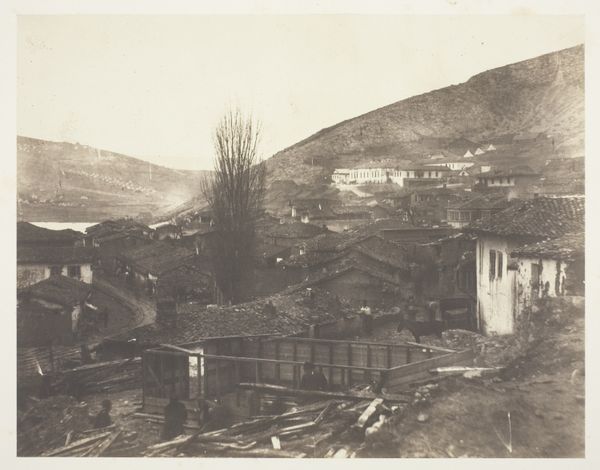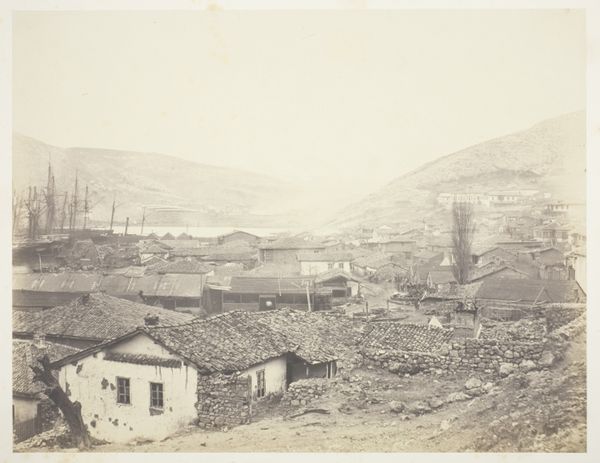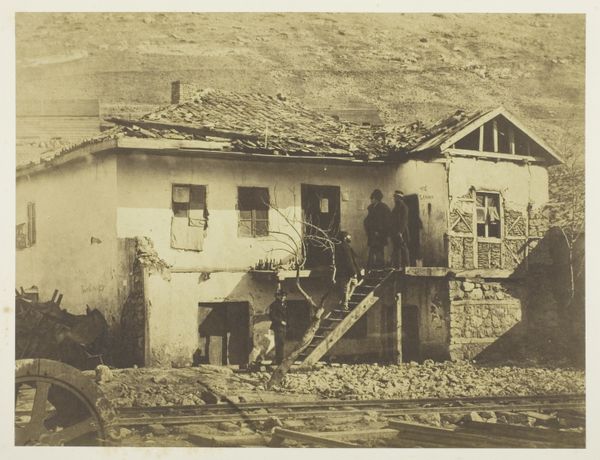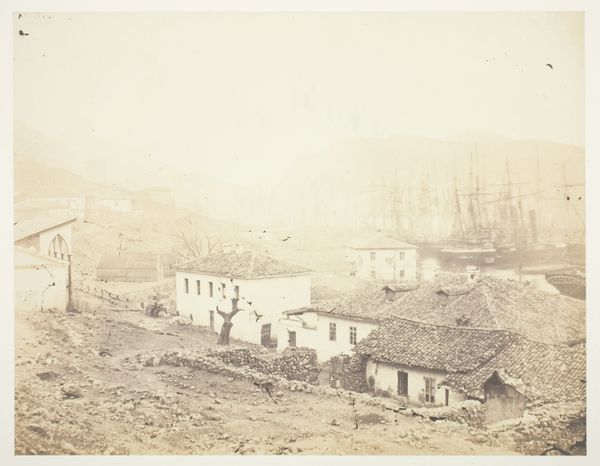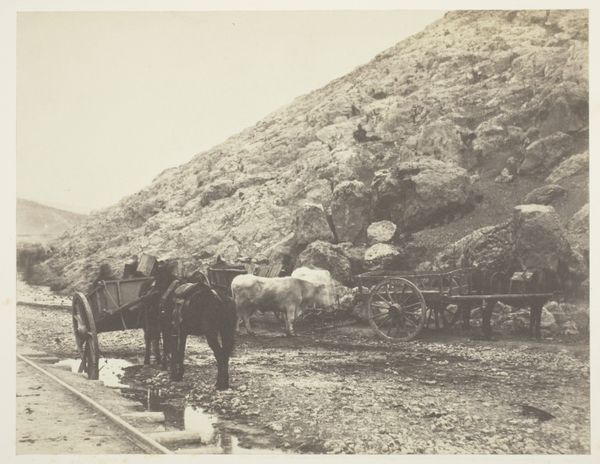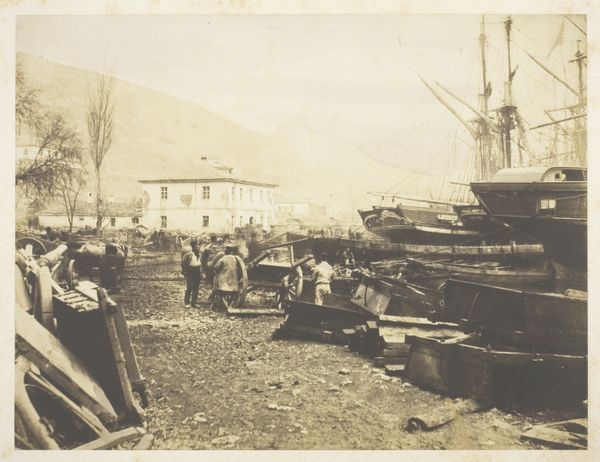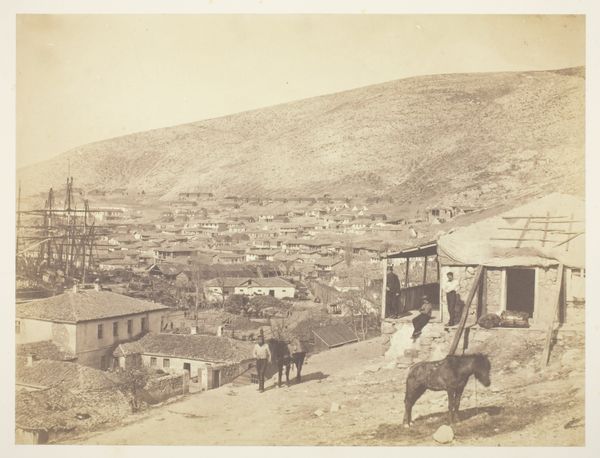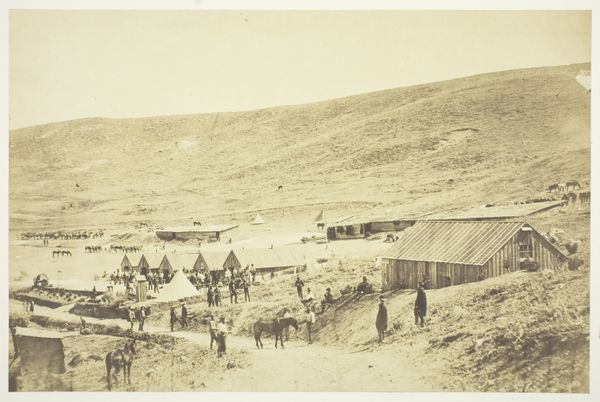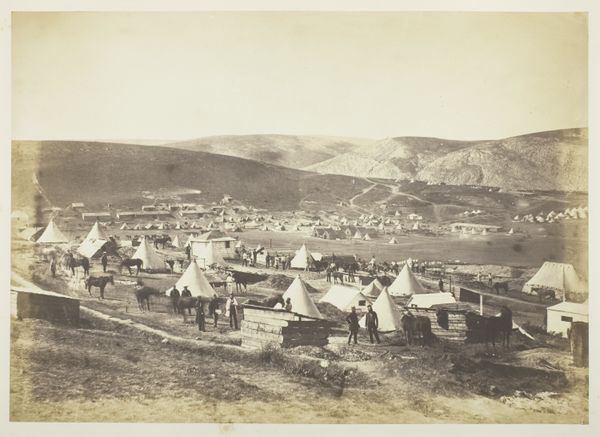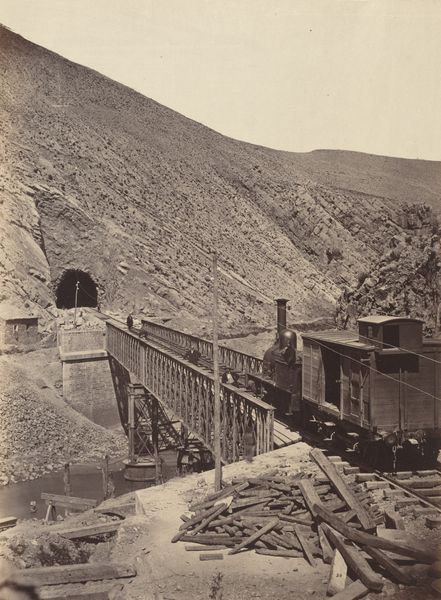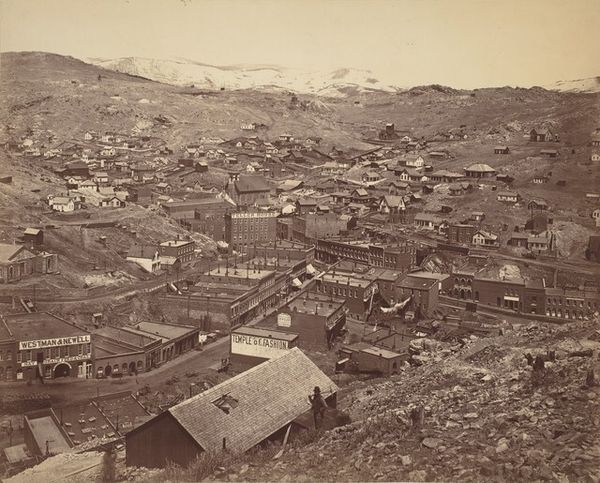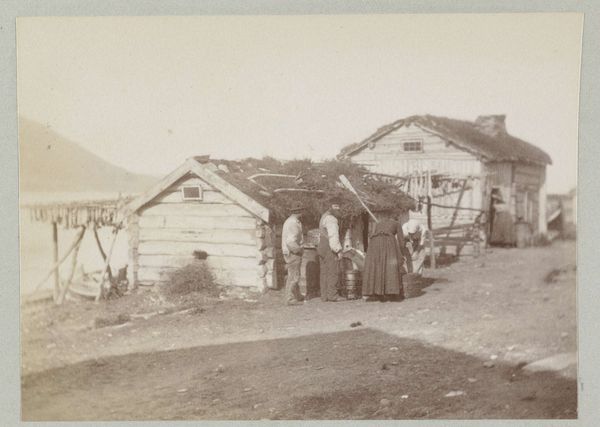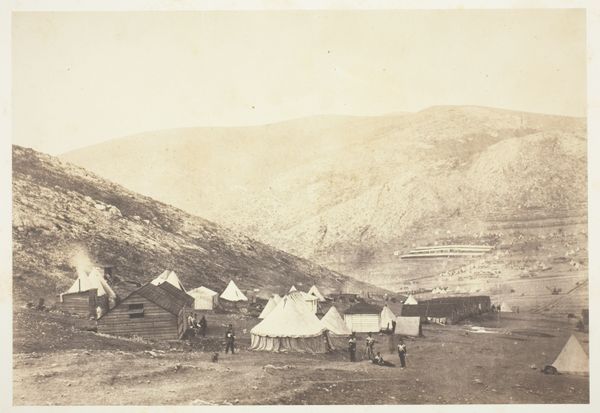
print, paper, photography
#
16_19th-century
# print
#
war
#
landscape
#
paper
#
photography
#
historical photography
#
england
#
19th century
Dimensions: 20.6 × 26 cm (image/paper); 40.4 × 53.4 cm (mount)
Copyright: Public Domain
Editor: This is Roger Fenton's "The Railway Yard, Balaklava," taken in 1855. It's a photograph, a print on paper, and it depicts a rather chaotic scene. What immediately strikes me is how much work seems to be happening; there’s an overwhelming sense of industry, but for what purpose exactly? What can you tell me about this work? Curator: From a materialist perspective, this image is fascinating because it freezes a specific moment in the Crimean War, focusing not on heroic battle scenes, but on the infrastructure that made the war machine function. Look at the railway itself – the means of transporting materials was completely transformative, dictating the entire operational efficacy. What materials are visible in the photograph beyond the obvious? What evidence of production do you notice? Editor: I see lumber, presumably for building, and the rails of course. And people everywhere seemingly focused on tasks... but they're all sort of still. The staging and the medium work against each other. So this portrays labor, but doesn’t feel like active work... it feels almost performative. Curator: Exactly. Early photography required long exposure times. This significantly influenced what Fenton could capture. He wasn’t just documenting a railway yard; he was composing a scene reflecting the constraints of his medium and maybe hinting at constructed realities. The workers remain still because that’s what the medium dictates. So how does understanding the process affect how we understand the message, particularly around the concept of labor in wartime? Editor: So, the technology available actually shapes how we understand the effort required to maintain a war. Knowing this photograph captures stillness through its technical limitations pushes me to consider all the *unseen* movement—the constant supply and transport this yard represents. I hadn’t considered that, thanks! Curator: Precisely. It highlights how the means of production aren't neutral. This image offers insight into 19th-century society, technology, and their influence on warfare – not just the war itself, but also the art that attempts to depict it.
Comments
No comments
Be the first to comment and join the conversation on the ultimate creative platform.
